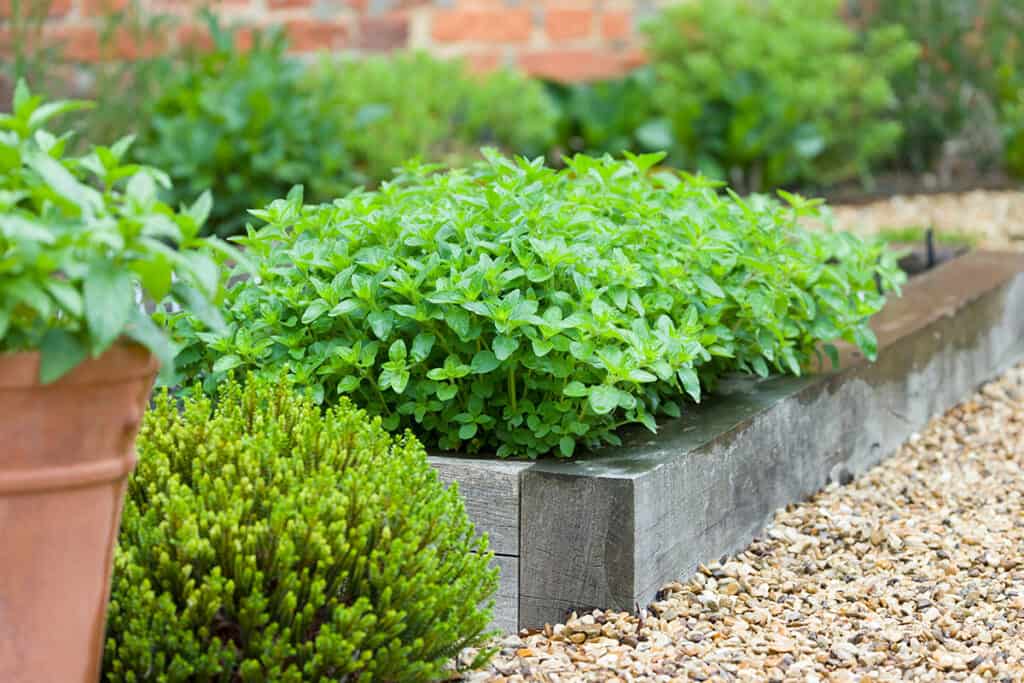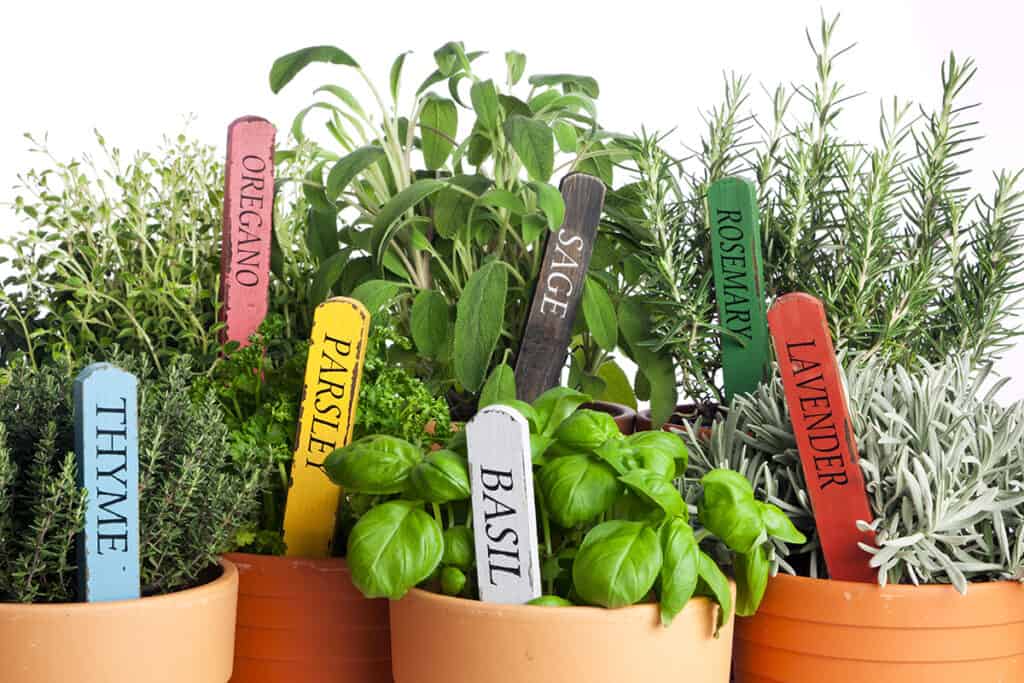Herbs are indispensable in the kitchen, and if you’ve only bought them in jars in the supermarket you may be surprised at how different they taste when you pick them fresh from your garden. To grow your own herbs, a good soil mix is 4 parts of sandy loam and 1 part compost. You can find herb plants at local garden centers and nurseries. You can buy fresh herbs in supermarkets, too, but if you grow your own you can cut just the amount you need.

Many herbs used in cooking grow best in a sunny location with well-drained soil. Plant them in pots or in a garden, and clip leaves as you need them for cooking. At the end of the season, you can dry your own herbs to store and use over the winter.
Here are some herbs to consider growing:
Basil is a classic addition to tomato sauces for pasta or pizza. Basil can be dried for use in winter, though the flavor won’t have the pizazz of leaves picked fresh from the garden.
Chives belong to the onion family and have clumps of hollow, narrow cylindrical leaves with a mild oniony flavor. The purple flowers that appear in late spring or early summer are edible too, and make tasty accents for salads. Cut stems as needed — plants will keep producing into fall.
Dill has feathery bluish-green leaves made up of lots of thin leaflets. Its flowers resemble those of fennel or the wildflower Queen Anne’s lace. It’s classic for making pickles, and terrific with salmon and other fish. Best used fresh from the garden, but you can also dry it for winter use. Dill is attractive to bees.

Mints Peppermint and spearmint are the best known of the mint tribe, but there are many mints, all with cooling qualities. The plants have distinctive square stems. Many mints are perennials and can spread in the garden. Plants grow about 2 feet high.
Parsley goes with lots of food, except for desserts and sweets. Curly parsley is most familiar, but there’s also a flat-leaved variety. Plant in a sunny to partly shaded location and cut leaves as you need them in the kitchen.
Sage is a familiar ingredient in Thanksgiving turkey stuffing but has a host of uses. Include young leaves in omelets, soups, sausages and more. There are numerous types of sage, from dwarf varieties to some with colorful leaves including Tricolor (cream, purple and green), Purpurea (purple) and Aurea (golden and green).
Tarragon is one of the classic French fine herbs. Its fresh leaves have a hint of licorice, but when dried they take on a mellower flavor. Tarragon is classic in bearnaise sauce, remoulade and French dressing.
Thyme is a most versatile family, there are many varieties of thyme, some with notes of lemon, caraway or nutmeg. Give thyme a location in full sun, and soil that’s well-drained.














![Tucked along the shoreline of West Neck Harbor, this Shelter Island retreat offers a rare opportunity for relaxed waterfront living. ☀️⚓ With a waterside pool, deep water dock, guest cottage, and 220± feet of bulkhead frontage, every inch of the property is designed to embrace the outdoors. Inside, rich architectural details, sun-filled rooms, and elegant entertaining spaces blend comfort with character, making this a true summer escape.
37 East Brander Parkway, Shelter Island
Represented by Rebecca Shafer @myshelterisland of @thecorcorangroup [link in bio]](https://hamptonsrealestateshowcase.com/wp-content/uploads/sb-instagram-feed-images/515283061_18519694612030135_1293239383085970748_nfull.webp)




![A private Sag Harbor retreat with timeless elegance and space to roam 🌿 Set on 6.5± secluded acres, this beautifully designed estate offers over 8,000± square feet of refined living, with layered outdoor spaces, a 50-foot gunite pool and spa, and ever amenity needed for effortless Hamptons Living.
47 Middle Line Highway, Sag Harbor Represented by @theenzomorabito of @douglaselliman [link in bio]](https://hamptonsrealestateshowcase.com/wp-content/uploads/sb-instagram-feed-images/513860206_18518605354030135_4589361988158119558_nfull.webp)

